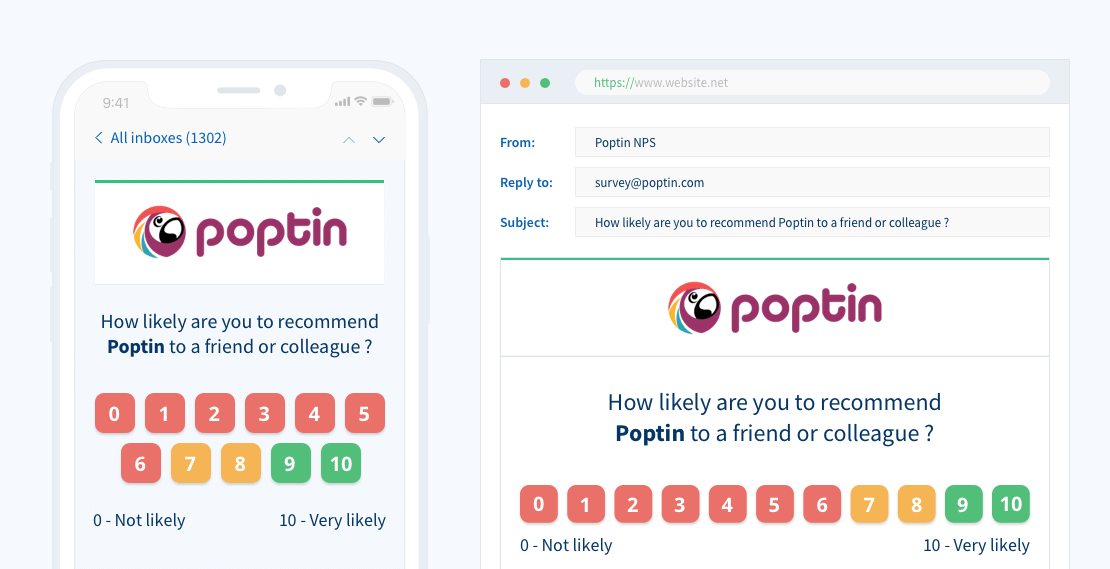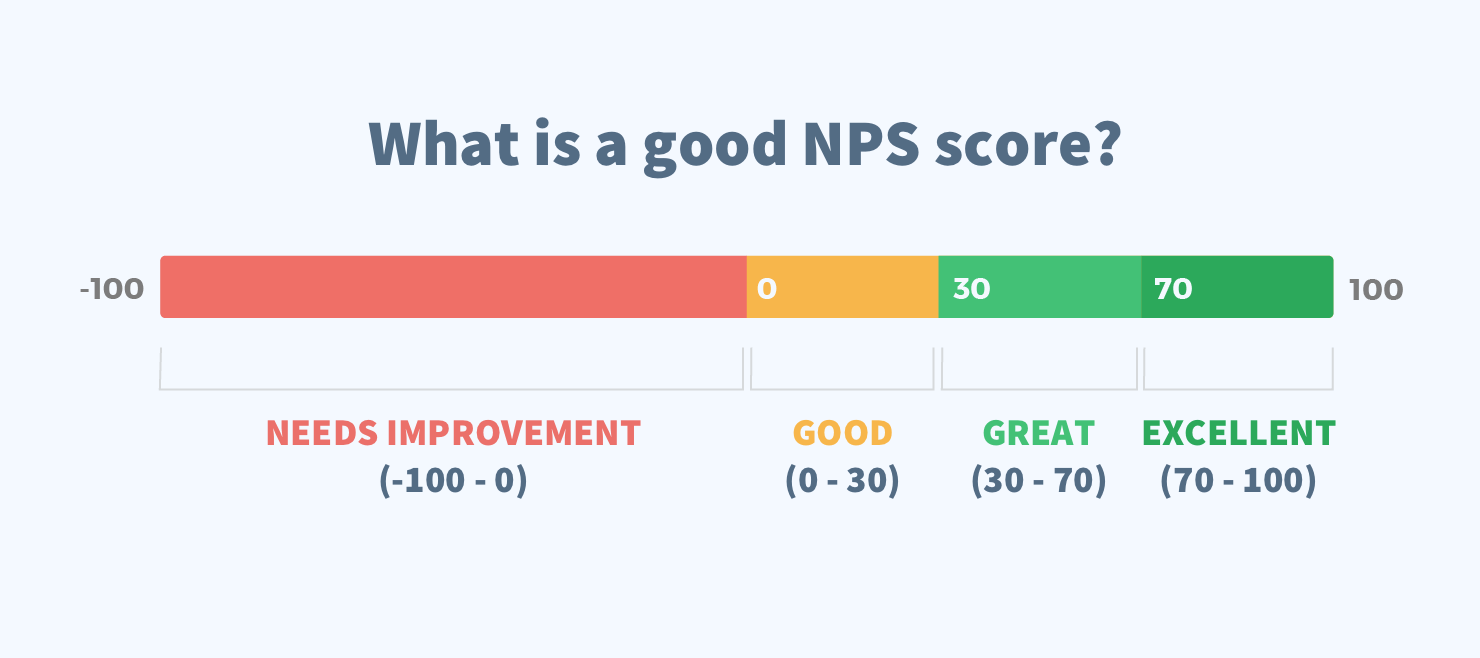As a business owner, growth is likely something you’re always thinking about day and night. The best way to get the attention of new customers, the right way to differentiate yourself from your competitors, the proper way to craft a value proposition that boosts conversion rates – those kinds of thoughts.
Well, according to Forrester Research (a premier market research company), by 2020 one of the best ways to drive business growth will be to focus on customer experience since it’s expected to surpass both price and product. It’s easy to see why, given that customer experience comprises:
- How much consumers like your brand, and how much they love engaging with it.
- How satisfied customers are with the way your sales representatives treat them.
- How happy customers are with the service/product they receive.
And one of the more popular ways to gauge and improve customer experience nowadays is by implementing Net Promoter Score – the methodology employed by hundreds of successful companies.
What Is NPS?
NPS stands for Net Promoter Score, and it’s a survey companies can use to measure how happy customers are with their brand, product or services. First developed in 2003, it’s now used worldwide.
The NPS survey consists of two parts. The first is a question that asks customers how likely they are to recommend your business to other people on a scale of 0 to 10. Depending on the answers customers give, they can be grouped in the following categories:
- 0-6 – Detractors (Unhappy customers you’ve lost or will lose)
- 7-8 – Passives (Customers who need a push in the right direction to become loyal)
- 9-10 – Promoters (Satisfied clients who love your brand and likely promote it through word of mouth advertising)

Next comes a follow-up open-ended question that asks clients what drove them to give their rating (what they like about your brand, what they dislike about your product/service or customer support – information like that).
What Is a Good NPS Score?
To find out what your score is, you use a straightforward calculation formula – subtract the percentage of Detractors from the percentage of Promoters.
What qualifies as a good NPS score? A rating below 0 would mean that your business has a lot to do to improve its customer satisfaction levels.

An NPS higher than 50 would indicate that your company has more happy customers than unhappy ones, whilst a score of 75 or more is a proof of customer love towards your brand and plenty of positive word-of-mouth from their referrals.
Therefore, a high NPS score shall pinpoint that your customer referrals will most likely convert into new leads and more revenue for your company.
Once calculated, your NPS can serve as benchmark allowing you to compare your performance to the competitors’ within your industry.
How to Grow Your Business Using Net Promoter Score
1. Use NPS for Better Marketing Results
NPS surveys are a good way to improve your marketing efforts by focusing on customer satisfaction since the methodology lets you know exactly what parts of your product/service your clients like the most. That actionable insight can help your marketing team craft better campaigns that focus on those aspects to get the interest of potential clients faster.
For example, if you offer a spell checking product and your NPS surveys show that your customers really like that it can be used as a browser extension, you can have your marketing campaigns focus more on that.
That kind of information can be pretty important if you have a tight marketing budget since you can just highlight the aspects that are sure to top your sales funnel.
But beside just establishing a direct line of contact between you and your client base (which is vital for great marketing results), NPS surveys can aid your marketing efforts in other ways:
- If you’re losing clients, you can find out exactly why that is happening, and what actions you must take with your next marketing campaign to reduce churn rates;
- You can potentially learn about negative consumer opinions before they hit the market or social media, giving you a chance to address them before they can damage your company’s reputation (something that won’t just cost you customers, but also potential hires too);
- Due to all the accurate and quantifiable data you have access to regarding customer sentiment, you can set real, actionable marketing campaign goals for your team instead of speculative ones, making it easier to monitor progress. That also increases your team’s productivity, and can potentially reduce the time needed to set up and run the campaign as well.
Why Not Just Use Social Media Sentiment?
While you could rely on public opinion when putting together your marketing campaigns, there’s just one problem – it isn’t as accurate and relevant as customer sentiment.
Think about it – social media sentiment gives you an idea of how the general public feels about your value proposition, whereas an NPS score lets you know how your paying customers view it. Overall, the second type of opinion is much more valuable for your business since it comes straight from people who already paid for your product/service, not people who only might pay for it.
Plus, general public opinion doesn’t always represent the opinion of paying customers. Disney is a good example of that – while the company is considered to be one of the most loved brands both online and offline, its NPS score hovers around -7, which hardly reflects the “most loved brand” image, and shows their client base probably isn’t too happy with them.
The only way social media sentiment would really be useful here is if you only track what your paying customers are saying about your brand, and ignore everybody else. While that’s doable, it’s much more time-consuming than sending out NPS surveys.
2. Use NPS Surveys to Boost Your Sales
By using the open-ended NPS question, you can find out everything you want to know about how customers view your product/service. From that, you won’t just learn what improvements you need to make, but also what specific, personal pain points your sales reps and marketing department can focus on to offer a more personalized experience.
That’s exactly what you need to build a trust and loyalty-based relationship with your existing customers. Why is that important? It’s all due to one of the oldest business adages – that 20% of your existing customers will account for 80% of your future revenue. It makes sense when you really think about it – customers who are happy with your business are much more likely to buy from you again than people who might show an interest in your product/service.
And that’s not just speculation – data backs it up. According to research from Frederick Reichheld of Bain & Company (the creators of the NPS framework), something as simple as increasing customer retention by 5% (which is achieved by increasing customer satisfaction with your brand) can result in a 25% to 95% increase in profits. And according to Forrester Research, acquiring new customers will cost you five times more than retaining existing customers.
Lastly, another reason why focusing on your NPS score will help you boost sales is because happy customers are much more likely to promote your brand to other people (data says they’re likely to tell up to nine people). Getting more customers aside, here’s exactly how that will boost sales:
- Referred customers generate at least 16% more in profits;
- People introduced to your business by their friends are 4 times more likely to make a purchase;
- Referred customers have – on average – a 16% higher lifetime value than non-referred customers with similar time of acquisition and demographics.
How to Use NPS to Boost Sales
Because NPS surveys are so versatile, you can use them in different ways to drive more revenue. Outlined here are the methods we believe to be the most efficient:
- Focus the survey on prospects instead of customers, and customize it to ask respondents about their expectations, not just their general opinion. You could have the survey trigger when they visit your landing page or website, for example. That makes it easier to get more sales because you’ll be offering potential clients exactly what they want;
- Use NPS data to tweak your value proposition to make it even more appealing. NPS feedback can offer you valuable insights regarding what product/service features paying customers love the most, and you can use that information to highlight said features in your value proposition. If paying customers love them, it’s likely the prospects will also want to hear about them and/or might be swayed by them;
- Send surveys to sales opportunities you didn’t manage to convert into customers. They can be an excellent source of transparent feedback regarding what changes you need to make to your product/service to make it more appealing to potential customers. There’s even a chance the “lost” leads might decide to become customers once they see you taking their feedback seriously.
3. Use NPS as a Growth Metric
One of the best ways to grow your business is to keep track of the right growth metric so that you can make accurate predictions regarding future development. This way, you know how to better allocate resources and manpower within your organization.
Well, the good news is that Net Promoter Score surveys can help you do that. Since they measure customer satisfaction, you can get an idea of how many paying customers are likely to purchase from you again.
We’re not the only ones saying that. Plenty of people who hold or held important positions in highly successful companies believe the same thing. A good example is Bill Macaitis (former CMO/CRO and Board Advisor at Slack) who once said in an interview that NPS is “a leading indicator of future growth.”
Plus, consider this – when paying customers respond with a 9 or a 10 to your NPS question, that doesn’t just mean they are happy with your brand. It also means they are willing to promote your brand to other people.
Depending on your number of Promoters, you might manage to predict business growth to a certain extent. You can make the prediction more accurate by following up with those Promoters, and offering them an incentive (discount, free item, etc.) for referring their friends and family. Beside that, you can also encourage them to mention your brand on social media, link back to your website, or post reviews of your product/service.
4. Use Detractors’ Feedback to Improve Your Brand Image
Detractors can be a bit „scary” to think of since they represent customers you lost or might lose. However, they can also be an excellent source of information regarding how you can make your product/service better.
Basically, you can follow up with all the people who said they wouldn’t recommend your brand to others, and ask them what they didn’t like about your product/service or what you could do to improve the score they gave you. Make sure you use a friendly tone and thank them for taking the time to respond to your NPS survey in the first place.
Besides just aiding your product development process, that will also improve how those Detractors view your brand. Even though they gave you a bad rating, you’re still reaching out to them to ask for their opinion and potentially implement their feedback – that’s the kind of thing that can turn them back into Passives or – even better – Promoters.
Bottom Line
Since NPS surveys show you how your client base really feels about your product/service, they are an excellent way to grow your business. NPS can establish a direct, clear line of communication with your customers, giving you the exact information you need to make your brand much more appealing – both to existing clients and to potential customers.




